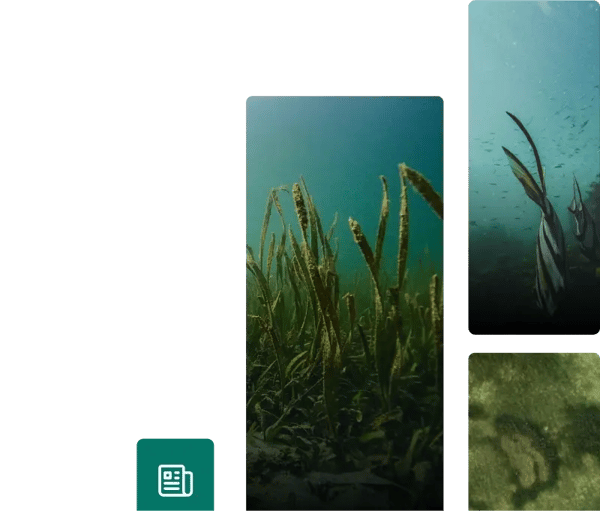Understanding Blue Carbon & Mangroves' Role in Carbon Sequestration
Blue Carbon projects are those that fall under Wetlands Restoration and Conservation (WRC) projects, and are devoted to safeguarding, revitalizing, and preserving wetland ecosystems, encompassing marshes, swamps, peatlands, and other coastal and oceanic habitats. These projects concentrate on reinstating hydrological flows, safeguarding biodiversity, and enriching the ecosystem services furnished by wetlands.
WRC projects encompass actions, such as; reinstating natural water flows, preventing pollution, and managing invasive species. Given that wetlands store significant amounts of carbon in their vegetation and soils, these projects aid in sequestering carbon by helping to revive wetlands. Moreover, WRC projects aid in regulating water quality, averting floods, supporting wildlife habitats, and furnishing recreational and educational opportunities for local communities.
These projects are known as carbon removal projects, focusing on reducing carbon levels already existing in the atmosphere by sequestering said carbon in the ground.
What is the role of mangroves in carbon sequestration?
Mangrove projects encompass the preservation and rehabilitation of mangrove ecosystems, renowned for their remarkable capacity for carbon sequestration. Conservation endeavors prioritize shielding existing mangroves from deforestation, pollution, and coastal expansion. Restoration initiatives entail canal cleansing and the planting of mangrove saplings in deteriorated zones, or areas where mangroves have vanished.
Mangroves capture carbon by accumulating organic matter in their roots and sediment. These projects enhance hydrological patterns in tidal regions, furnish coastal defense, bolster fisheries, wildlife habitats, and bolster local livelihoods through the sustainable utilization of resources.
For more information on the types of properties in which mangroves sit, please read our blog.

What are the economic benefits of Blue Carbon projects?
Blue Carbon ecosystems offer recreational and leisure opportunities that can drive tourism and stimulate economic growth in coastal regions. Mangrove forests, for example, attract tourists interested in birdwatching, kayaking, and nature photography. Similarly, seagrass meadows and coral reefs are popular destinations for snorkeling and scuba diving enthusiasts. The development of ecotourism infrastructure, such as guided tours, visitor centers, and eco-lodges, can create new job opportunities in the tourism industry, ranging from tour guides and boat operators to hospitality and restaurant staff. Moreover, the influx of tourists can benefit related industries, such as food and beverage, retail, and transportation, thus providing a significant boost to the local economy.
Mangrove preservation and rehabilitation efforts exemplify the potential of natural solutions in combating climate change while supporting local communities through ecotourism and sustainable livelihoods. As we prioritize the protection and restoration of Blue Carbon ecosystems, we unlock many economic opportunities, bolstering both environmental resilience and human well-being along our coasts and beyond.
For more information on a series of visits to various Blue Carbon projects. Follow Alessandra Souroujon's adventure by reading our blog, "Mexico Visit: 3 Ecosystems, 12 Communities & 10 Days."
In conclusion, understanding the significance of Blue Carbon and the pivotal role of mangroves in carbon sequestration unveils a pathway toward sustainable environmental stewardship and economic prosperity. Blue Carbon projects, centered on Wetlands Restoration and Conservation, not only mitigate carbon emissions, but also foster biodiversity, enhance ecosystem services, and fortify coastal resilience.
Please reach out to us if you're interested in contributing to any of these projects or if you'd like to learn more. By purchasing the carbon credits generated by these initiatives, you support the implementation of restoration and conservation activities, enhancing the livelihoods of local communities.
Sources:
Common Q&As
There are various types of Blue Carbon policies and conservation initiatives, including; The United Nations Framework Convention on Climate Change, The Convention on Biological Diversity, and more. For a deeper dive into this read our article: Blue Carbon Policy and Conservation Initiatives.
Although mangrove forests are widely distributed across more than 120 tropical and subtropical countries and territories, they are rare globally, covering less than 1% of all tropical forests worldwide. Some locations include; Mexico, Mozambique, and Indonesia.
For more information refer to our article: Types of Property on which Mangroves Ecosystems Sit.
The significance of Blue Carbon projects lies in their capacity to combat climate change and their interconnectedness with the SDGs. SDGs, adopted by the United Nations in 2015, encompass a broad spectrum of social, economic, and environmental objectives aimed at achieving a sustainable and equitable future for all.
For more information, read our article: Blue Carbon and Sustainable Development Goals.
Share this
You May Also Like
These Related Stories

Blue Carbon & Sustainable Development Goals

Blue Carbon: Policy and Conservation Initiatives


